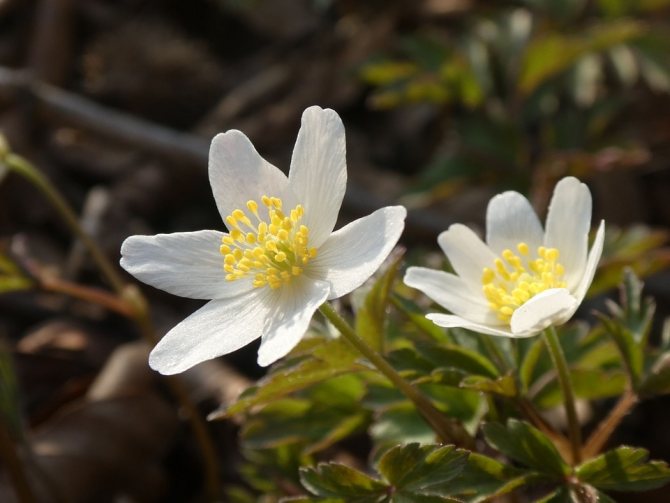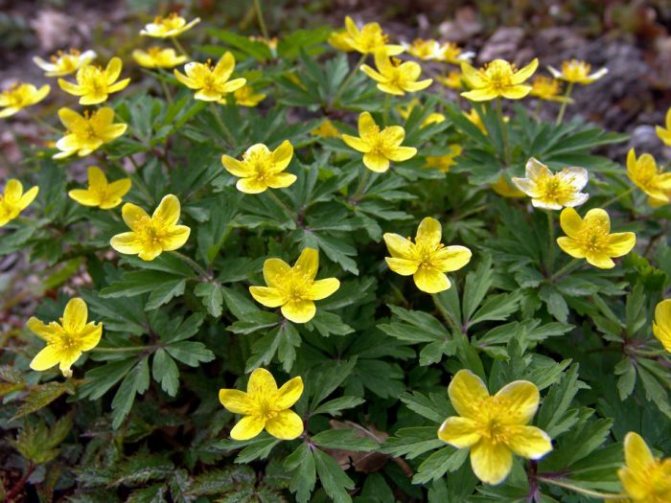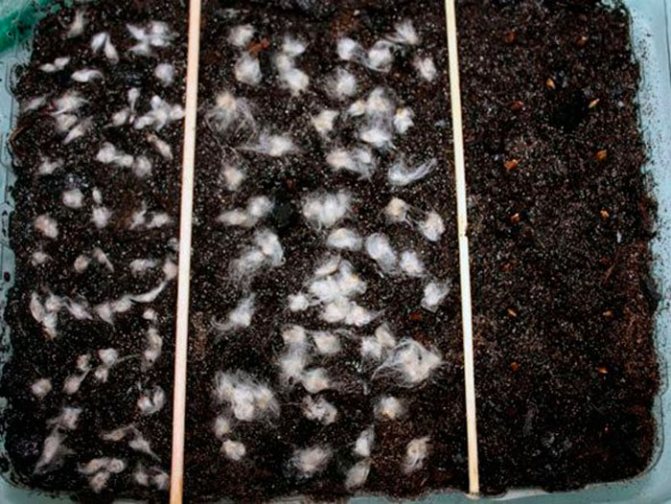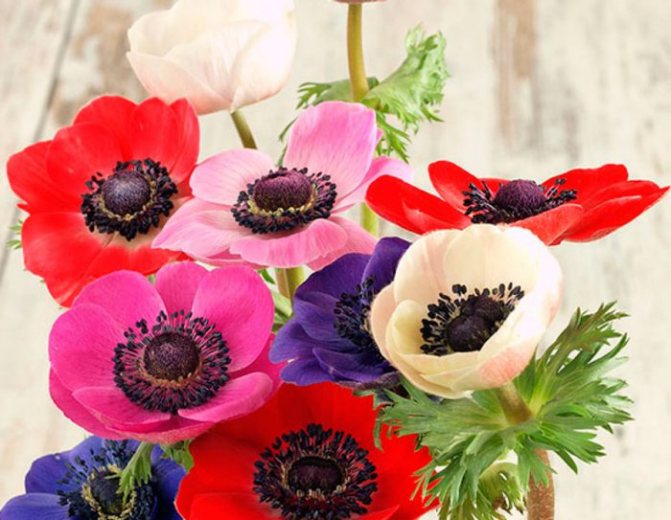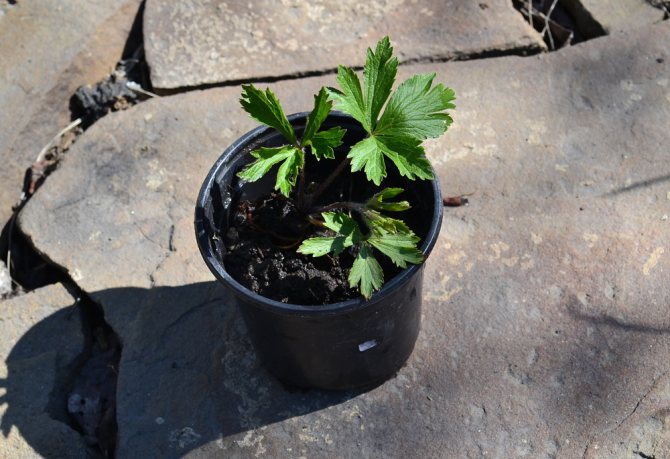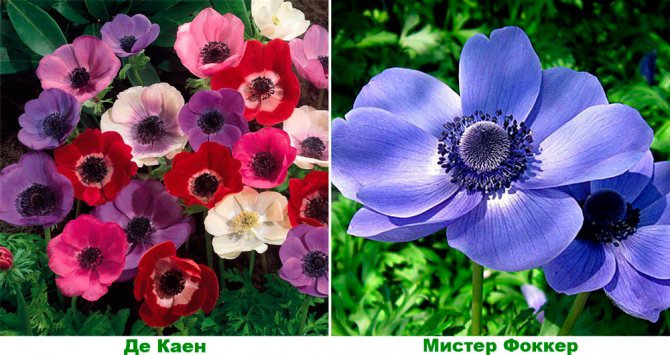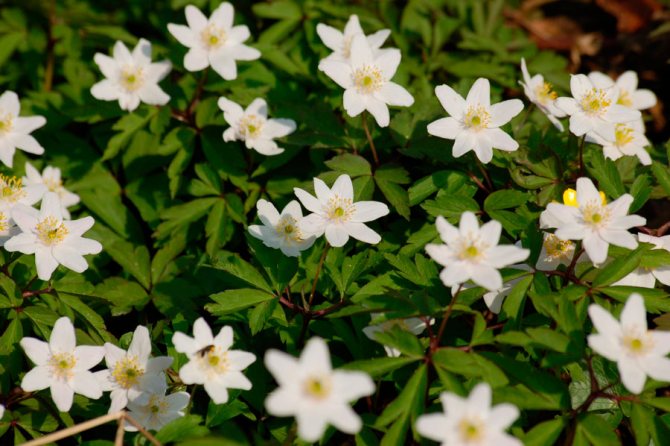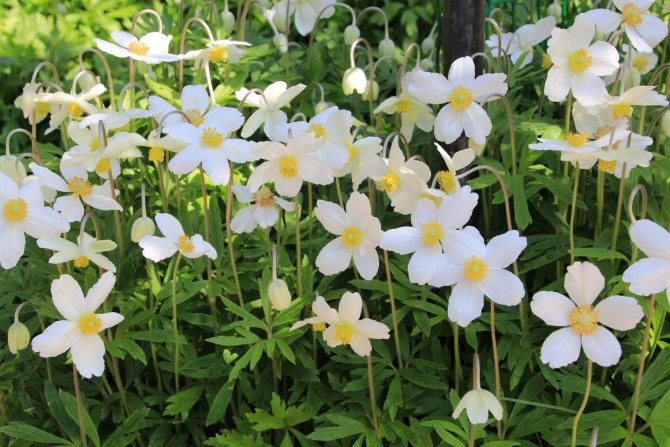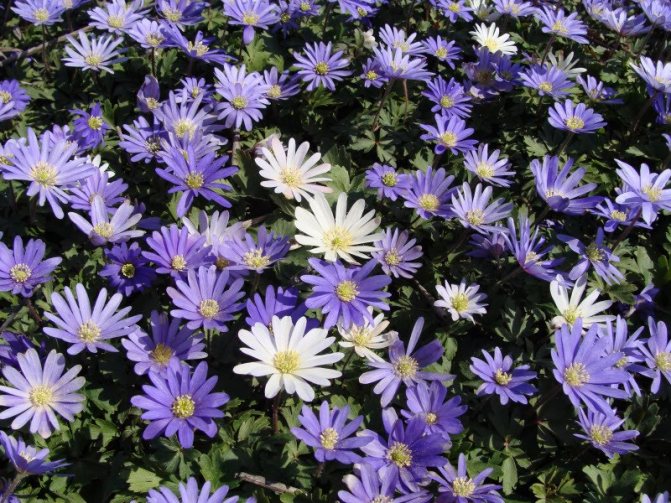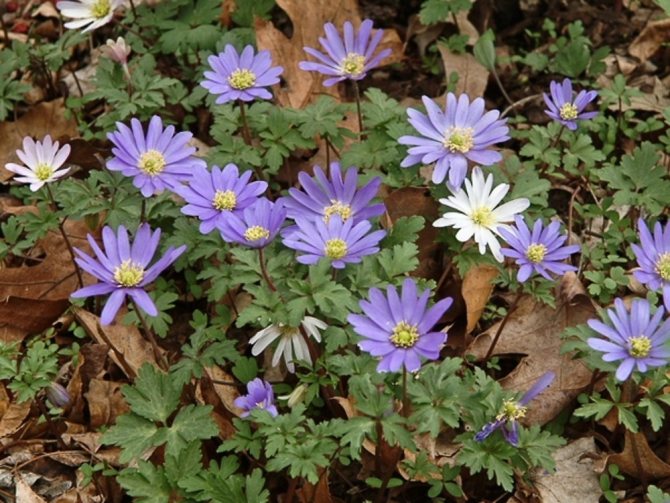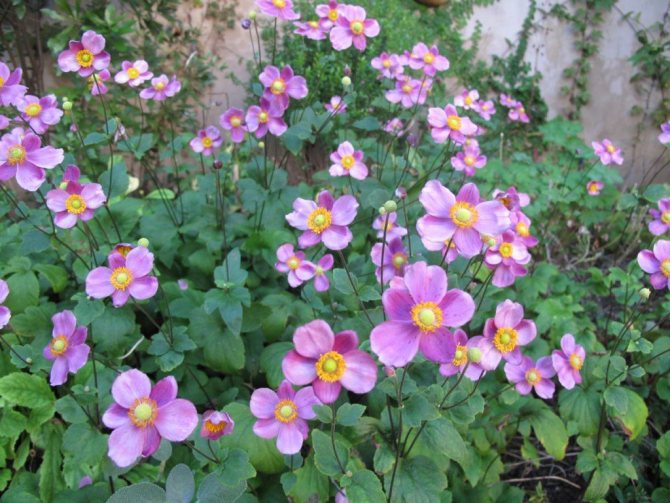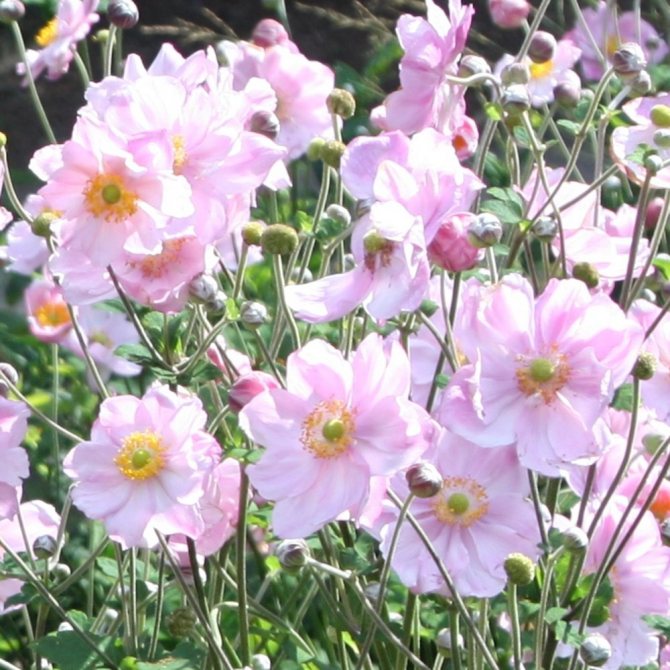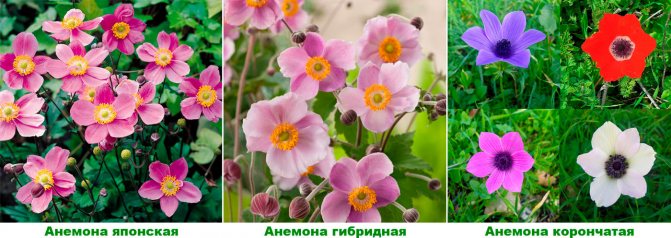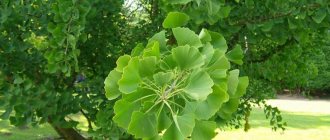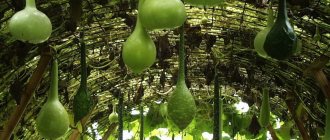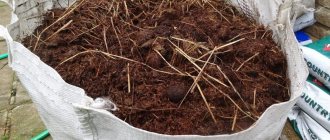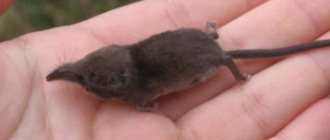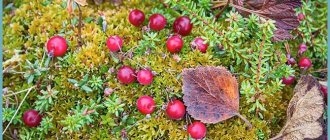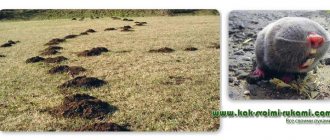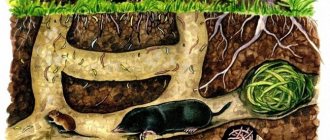Quivering petals of snow-white or multi-colored corollas tremble from the slightest breath of spring or autumn breeze, sway on thin peduncles over a carpet of carved foliage - this is how anemones bloom.

Growing and caring for them in the open field is simple, only the methods of reproduction are distinctive: different species of the genus Anemone from the Buttercup family differ in the structure of the root system.
"Anemos" in translation from Greek - wind, therefore the name of the flower is often understood as "daughter of the wind."
In botanical literature, the plant is also found under the name of the anemone, and in the folklore, certain natural species are called freckle, part-blind, anemone, canapel, white dream, susanka, the dream of the Virgin and many other poetic names.
The natural habitat of anemones is the entire Northern Hemisphere, with the exception of the tropical zone.
The ubiquitous anemones have even penetrated the Arctic, populating the coasts of the northern waters of Russia, Canada, Norway, Alaska and the adjacent islands.
Appearance
Anemones are herbaceous perennials, rhizome or tuberous, with vertical pagons from 30 cm to 80 cm in height.
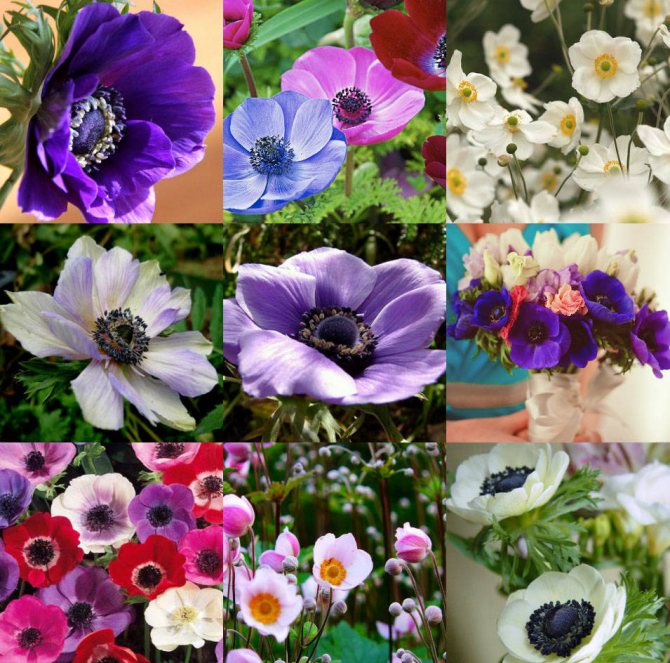

Basal double trifoliate or pinnately dissected leaves on elongated petioles are collected in a rosette, stem leaves are few in number.
Flowers with a circumference of 3-8 cm are solitary or less often grouped in a semi-umbellate inflorescence.
The colors of the petals are different - from white to pale pink, lilac, blue and scarlet. Many terry and semi-double forms and varieties have been bred.
The fruits are similar to miniature nuts, naked in some species and pubescent in others, often adapted to spread by the wind, occasionally by animals.
Most anemones are winter-hardy, tolerate cold well and practically do not freeze out.
They are popular in landscape design, used for planting in rock gardens, mixborders, borders, for decorating parks and home gardens.
Characteristics and description of anemones
Among the huge assortment of anemones, you can find not demanding species at all, but there are also those that require careful care of the rhizomes. There are varieties that sprout from tubers. It is much easier to grow rhizomes, but with tubers you will have to try and work hard.
There are a number of features to consider when growing the species of these flowers:
- The anemone needs to be watered constantly, especially in dry climates;
- The plant is fed with mineral fertilizers. Before planting a seedling, it is necessary to treat the soil with organic fertilizer;
- In winter, anemones require protection. It is best to cover the plant with leaves;
- Reproduction of anemones occurs before the beginning of winter.
It will be difficult to understand the main features of growing this flower. After all, as already mentioned, the plant has a huge number of species. It is best to understand the main types and features of caring for them.
Photo of anemone flower
Useful article: how to grow potatoes in a barrel
You can divide anemones according to their flowering time. As a rule, these are summer and spring sprouts. Spring species have the largest assortment. They look gorgeous and have a huge range of colors. So you can grow snow-white, pink and even lilac flowers. But this is not the whole range.There are even terry colors in nature. The flowering cycle of spring seedlings is rather short. Thus, starting in April, it ends in July. But there are special species that can bloom until the end of September. They have differences even in the shape of the rhizomes. For example, buttercup anemone has a firm rhizome structure, but the tubers are tender and germinates much more slowly.
The tender anemone is a very small plant. Sometimes it can reach 10 centimeters, but not higher. The most famous species include blue, white and pink. The less popular is the oak anemone. Such a sprout can even reach 30 centimeters. The colors are usually white, but sometimes you can meet other colors. It is a very unpretentious variety and can be grown even in unsuitable climates. Buttercup anemone also does not require special care and climate. Usually the plant can grow up to 25 centimeters, and the most popular color is bright yellow.
Growing anemones from tubers
Summer anemones are represented by Japanese, hybrid and crown varieties. As a rule, these are perennial varieties with a huge rhizome with several branches. Species begin to bloom only by August, and end only at the end of October. Peduncles can grow up to 80 centimeters high and sometimes even up to 1.5 meters. One sprout can grow ten multi-colored flowers. Crowned anemone is very popular for cultivation in the Moscow region. Mr. Flocker can grow many blue flowers at the same time on one tuber.
The hybrid type of plant is popular with a variety with a white-pink tint. This is a semi-double type of flower that can grow on land plots in the Moscow region. Japanese has the following representatives:
- Pamina has large pink flowers. Sometimes there are species with double flowering.
- Hadspen is considered a fairly tall plant. It dissolves with flowers of a creamy shade;
- Prince Henry blooms with semi-double flowers with a shade of bright pink.
Reproduction
Among the species diversity, the anemone is distinguished by the timing of flowering spring, summer and autumn flowering plants.
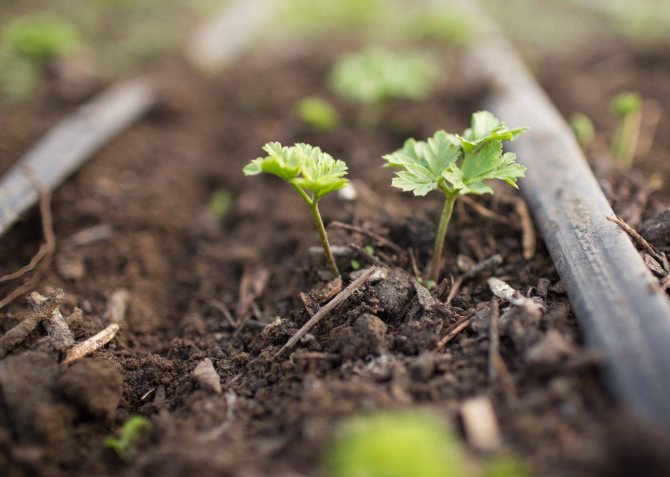

Most of the anemones that bloom by the beginning of autumn have powerful fleshy rhizomes.
Many spring anemones are ephemeroids with a short growing season and a bulbous root system, although rhizome perennials are also present.
Summer anemones mainly originate from the North American continent and are still rare in the gardens of domestic florists.
The structure of the root system determines the methods of reproduction - tuberous or division of the rhizome. It is also common to obtain new plants by sowing from seeds.
Tuberous propagation
It is not difficult to grow anemones from bulbs, the main thing is to purchase high-quality planting material.
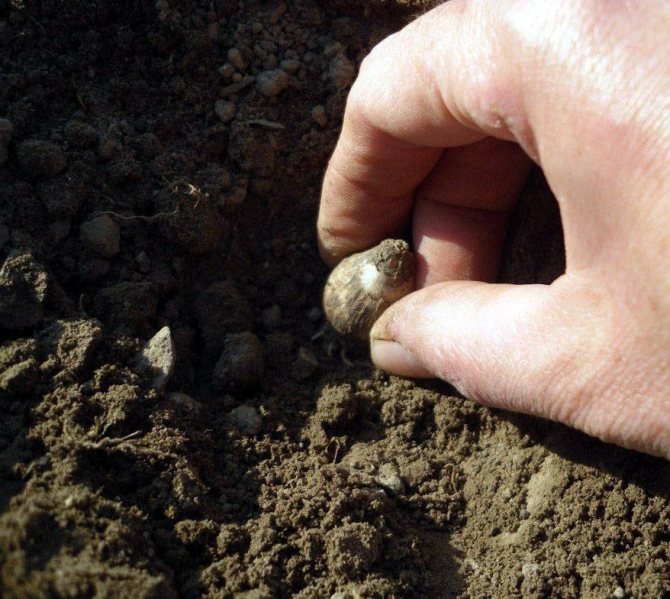

Often, the tubers are stored with suppliers for a long time, sometimes up to a year, they do not lose their vitality, but they acquire a shriveled appearance, as if hopelessly dried out.
Before planting nodules in the ground, it is necessary to prepare them and "wake up" - saturate them with moisture.
Immersion in water or a solution of a root-forming stimulant often gives the opposite effect - fragile roots rot away, therefore, it is undesirable to leave them in a container with water for more than 2 hours.
Experienced growers advise to wrap the corms in damp cloths and place them in sawdust, previously moistened, but not wet, for 6 hours.
After that, the tubers are placed in containers with a moist soil mixture of sand and soil for germination.
After 10-12 days, growth points wake up on them and roots break through, it becomes clear which side to bury the bulb into the ground.
In a shriveled state, it is not always possible to make out where the top is and where the bottom is. The prepared planting material is planted in soil or in containers.
Seed propagation
Growing from seeds of anemone is not as popular with gardeners as vegetative propagation.
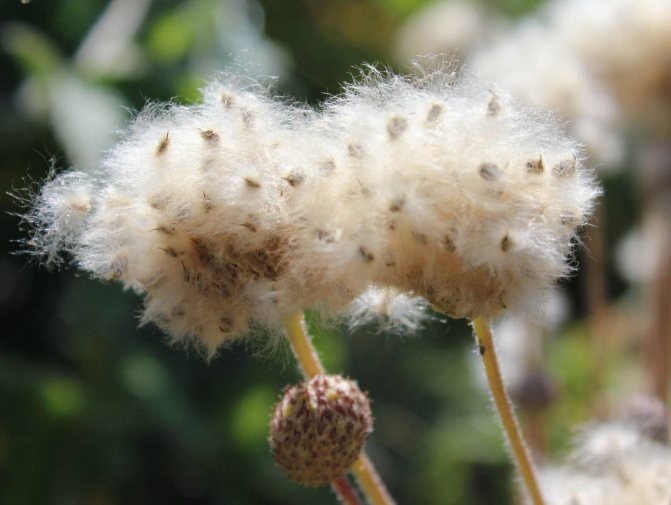

Although many natural species germinate as a result of self-seeding, fiddling with seeds is much more troublesome and time-consuming.
In addition, their germination is low, from the total sown amount, no more than a quarter of the seedlings are obtained, frail and suffering from the "black leg".
The seedlings do not always retain the characteristics of the parent plant, the flowers are paler, and in some double varieties, the first flowering is without the expected multi-petal corollas.
It makes sense to propagate by seeds those species and varieties that are adapted to this method, for example, multi-cut anemone, oak, crown, forest, tender, buttercup and their forms.
For sowing, freshly harvested seeds are used, which are buried into the prepared soil by no more than 2-3 cm.
If it is planned to store planting material until spring, it must be stratified in cold and humid conditions.
Seeds planted in the ground in autumn will sprout only with the arrival of spring heat. Seedlings sown in April will emerge from the ground in 25-30 days.
Propagation by rhizomes
Rhizome anemones can be propagated both in spring and autumn.
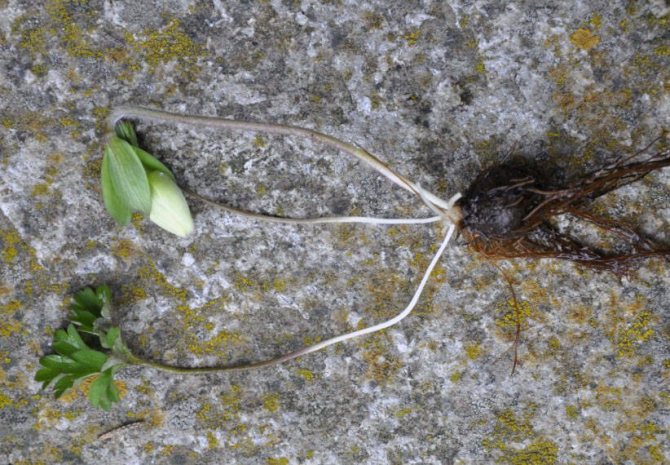

During transplantation, the rhizome is divided into several parts, the cuts are sprinkled with crushed charcoal to avoid the penetration of fungal and other infections, and seated in separate pits as independent specimens.
Moisturize moderately, do not overflow - the plant has roots that are vulnerable to decay.
Anemone can be propagated by rhizome without transplanting.
It is enough to slightly dig in the bush with a shovel and cut off a fragment of the root with several buds (at least 2-3), then proceed with the rhizome cutting in the same way as when dividing the rhizome.
Anemones can be planted in 4 ways
When planting anemones in open ground, a fairly spacious area should be prepared, since the flower grows well. Anemone can be planted in several ways:
- seeds in the ground in spring or autumn,
- adult rhizomes in the middle of the season,
- root suckers in spring,
- tubers in the spring.
1 way. Seed in the ground
In this way, you can plant any kind of anemones. To do this, it is necessary to enclose the site with a flexible curb or boards, prepare the soil of the desired structure and acidity. It is important to remember that anemone seeds are difficult to germinate, so before spring sowing, it is necessary to stratify them.
To do this, the seed is mixed with soil or sand, moistened and stored in a refrigerator at a temperature of +6 degrees for three weeks. At this time, the shell of the seed softens under the influence of cold and moisture, the metabolic processes of the embryo slow down, its vitality is preserved.
With the onset of favorable conditions, the embryo awakens, easily breaks the shell and germinates. The best time for spring sowing is the onset of consistently warm weather and the air temperature is not lower than +16 degrees.
Autumn sowing in open ground with fresh material will give the best shoots, since the seeds of the anemones will undergo stratification in natural conditions. The area for crops and soil are prepared as described above.
Planting in open ground is carried out at the end of August - in September. The seeds are distributed over the site, lightly sprinkled with earth, covered with non-woven material and remain so until spring. With the onset of warm weather, the covering material is removed, and after a while a large number of young plants will appear.
Method 2. Planting with adult rhizomes in the middle of the season
This method is used because many types of anemones lose their leaves after flowering and then it will be difficult to find them. Usually, a strongly overgrown bush is thinned out in this way.Adult rhizomes take root quite easily in a new place.
| Rhizomes prepared for planting | Root offspring with two buds |
Method 3. Root offspring in spring
This planting method is suitable for those types of anemones that give distillation from the root. A small section of the root with buds and shoots is carefully cut off from the mother bush and planted in the prepared soil in a permanent place.
Method 4. Planting tubers in spring
Most often, tubers acquired or stored since last fall are used. Before landing, they must be carefully examined. Sometimes there are dry or rotten spots on the tuber that must be carefully removed with a sharp knife. The cut site must be treated with wood ash and dried. It is advisable to hold healthy tubers for half an hour in a pale pink solution of manganese.
Tubers wake up slowly, so they need to be removed from storage early and awakened. To do this, you can put them in water for several days or wrap them in a napkin soaked in epin solution, then in a plastic bag for 6 hours. This will be a good start for the plant.
After a while, irregularities will appear on the tubers. These are buds, not roots. A sprout will appear from here and it is with this surface that the tuber should be planted up. Another landmark is that the sharp part of the tuber is down, and the flat part is up. If the tuber has already woken up, and it is too early to plant it in the ground, then you can temporarily plant it in any container with suitable soil, and then transfer it to a permanent place. But such an anemone will bloom much earlier.
Remember that for tuberous anemone need alkaline soil! To do this, lime or ash is introduced into the ground before planting. During the season, the soil around the plant is sprinkled with ash a couple more times and loosened.
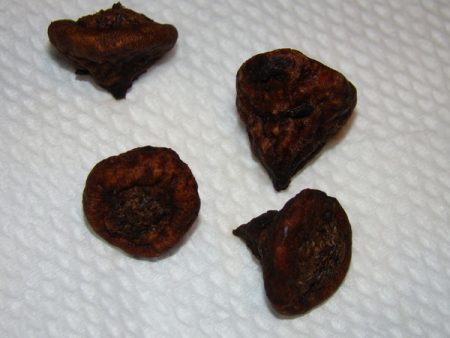

Landing with a pointed end down and a flat end up
Optimal planting time for anemones
Florists often argue when it is better to plant an anemone - in spring or autumn.
Corms are planted in spring, along with dahlias and gladioli, and rhizomes are transplanted in spring and summer after flowering, and in autumn.
Planting in spring
Spring plantings are much stronger and they meet winter cold, well-rooted and strengthened.
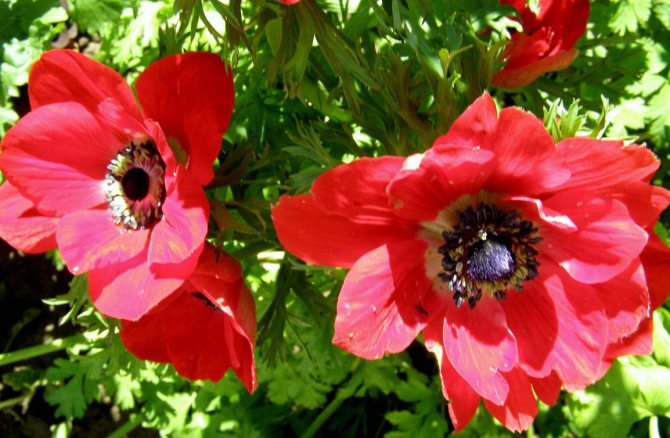

In the spring, sowing seeds of any type, planting tubers are carried out.
Seeds are sown in rows to a depth of 2-5 cm, row spacing is about 20 cm.
If the soil is wet, the soil in the rows is not watered. Dry soil needs moisture.
The tubers are planted in well-warmed soil after germination, around April-May, depending on the climate.
Holes with a circumference of 25-30 cm are located at a distance of 15-20 cm from each other.
A little wet sand is poured at the bottom, creating a kind of pillow.
The next few days of planting are not watered, then they are guided by precipitation: if there are enough of them, there is no need for watering.
Until the shoots appear, they monitor the weeds, if they appear, they are removed manually.
Early flowering anemones are transplanted after flowering in early summer, although the division of rhizomes is possible on the eve of the growing season.
The holes are dug in proportion to the size of the root fragments and are located at a distance of 10-15 cm. It is advisable to bury the growth points of the rhizomes into the ground by no more than 3-5 cm.
Planting in autumn
In early September, rhizome spring flowering anemones, as well as species blooming in summer, are propagated and transplanted.
Anemones, whose flowering lasts until late cold weather, is risky to replant in autumn - the plant may not have time to take root properly, and will die in winter.
If there is a need for a late transplant of anemone, for the winter they are well covered with fallen leaves, branches of conifers or pine needles.
In the fall, sowing of freshly harvested seeds is also carried out, which in natural conditions will undergo stratification and sprout in the spring. Autumn crops have a high germination rate.
How to care for anemones
Caring for a gentle anemone is not difficult at all. She does not need any special agrotechnical techniques. It is enough to provide the flowers with moisture, fertile fertilized soil, and they will bloom for a long time and magnificently.
Watering and loosening
In a typical summer, flowers need only one plentiful watering every 5-7 days. If the summer is dry, the anemone is watered twice a day - early in the morning and in the evening when the sun goes down.
Care should be taken to polish and loosen the soil around the anemones so as not to damage the delicate roots.
Top dressing
In regions with cool summers, anemones are fertilized three times. In the spring, fresh shoots that have just appeared are watered with a weak urea solution (1 tablespoon per 10 liters of water). When buds appear, anemones are fed with complex fertilizers with potassium, phosphorus and a small nitrogen content (in a ratio of 1.7: 6: 1, respectively) or with universal biohumus, guided by the instructions. And the last time - during flowering. This time, the nitrogen should be at least phosphorus. Make sure that no liquid gets on the leaves during feeding.
If before planting you dug up the ground and applied fertilizers, there is no need to additionally feed the anemones this year.
Prop and trim
The anemones have rather strong stems. And still, some varieties that grow above a meter need support. This precaution will prevent the stems from breaking from the gust of wind. To do this, use long pegs or slats of a nearby fence or gazebo.
When the flowering ends, it is better to cut off the plants immediately, leaving 3-5 cm above the ground. Then all the forces and nutrients will go into the roots, which will allow the anemones to survive the winter better. If seeds are needed, pruning is done after harvesting the seed.
Transfer
It is undesirable to keep anemones in one place for several years. The soil is depleted and the flowers weaken. Many varieties finish growing early, the foliage dries up and then it is difficult to find their roots for transplanting. Therefore, it is better to mark such varieties with pegs.
A suitable time for dividing and transplanting anemone is July and August. To do this, dig out the entire planting and only then divide into separate rhizomes. They can be cut, it is important that the kidneys remain on the segments. Parts of the rhizome or tubers are planted in the ground in the way already described, watered and mulched. The transplanted plants will begin to bloom next summer.
Preparing for winter
Many species of anemone winter well in the ground. In the south, adult plants are covered with mullein, humus, foliage to the cold. In temperate mid-latitudes, this is not enough. Cut plants are covered with a thick layer of mulch (at least 10 cm), straw and spruce branches. For a tender first year of planting anemones, the mulch layer needs to be increased. In early spring, the first step is to remove all shelter so that new shoots can hatch.


In cold regions, flower beds with anemones for the winter need to be covered with a thick layer of mulch and spruce branches.
It is better to dig up the crown anemone even in warm regions. This is done after the end of the growing season. The tubers are pre-dried, then placed in a single layer in a box, where they are stored until autumn. For the winter, it is better to put them in a room with a temperature of 2–5 ° C.
How to breed anemones
Anemones are best propagated by division:
- Cut the tuber so that each part has a renewal point.
- Rinse them in a weak solution of potassium permanganate or fungicide and let dry.
- Then sprinkle the cut points with crushed charcoal and plant in the ground in the usual way.
It's even easier with fresh rhizomes. Cut off new shoots from them and immediately plant them in the ground. It is better to propagate anemones in this way in the spring, at which time they take root better. In the Japanese anemone, as the root system grows, distant rosettes grow. They can also be used for reproduction along with part of the roots.
Growing problems and their solution
One problem with anemones is the lack of flowering. The reasons:
- A spring transplant is stress for a gentle anemone, so such a flower will bloom later than its non-transplanted counterparts, you just need to be patient.
- The plant lacks moisture. Check the soil moisture for some time and increase watering if necessary.
- Anemone has been growing for several years in one area and it does not have enough nutrition. It may be worth replanting it to another place or adjusting the feeding system. As an urgent measure, spill the soil under the flower with a complex fertilizer for flowering plants.
Planting anemones in the ground
The site for planting anemone is prepared in the fall - they dig deep with a pitchfork to pry the roots of weeds and leave them no chance to germinate in the spring.
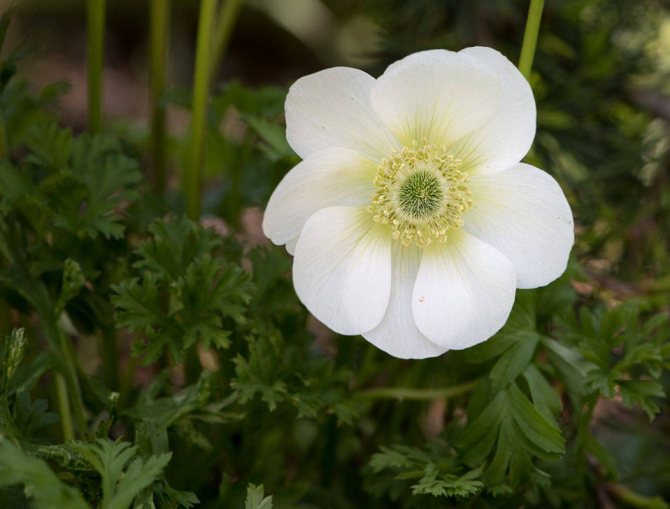

The soil is covered with leaf compost to enrich it with nutrients, and ash or dolomite flour is also scattered on the surface of the acidic soil.
Soil for anemone
Anemone is not too demanding on soils, many species grow on poor soils and even on the calcareous slopes of hills.
The plant will not put up with the high acidity of the soil, although it can grow on weakly acidic soil, but it does not develop as intensively as on fertile humus.
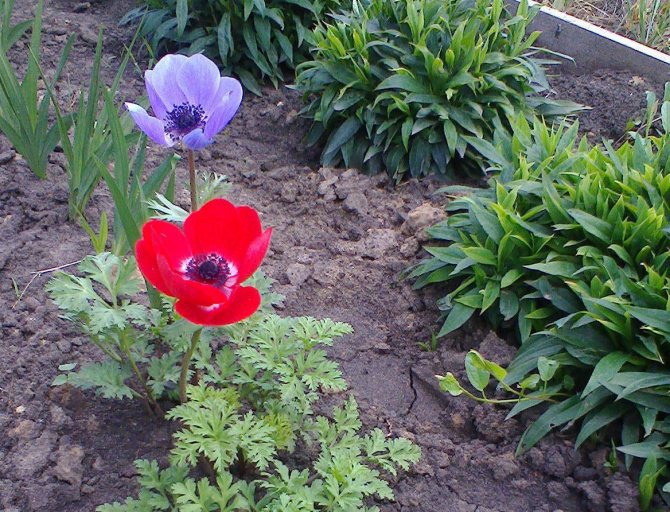

In the spring, the soil, still not devoid of moisture, is treated with a rake, destroying the crust formed during the drying of the upper layer.
Then they dig holes with a depth of no more than 12-15 cm, observing the distance between them according to the rules of agricultural technology.
A little sand is poured at the bottom of the hole, if organic matter was not introduced into the site in the fall, add a handful of ash and humus.
Tubers or rhizome fragments are positioned so that the growth point is not deepened by more than 2-5 cm. Sprinkle with soil, compact and lightly watered.
Care features
Growing anemones in the open field, as a rule, does not require vigilant attention from the grower and any special care methods.
During the growing season, it is necessary to remove weeds in a timely manner and shallowly loosen the soil so as not to hurt the roots.
Location and lighting
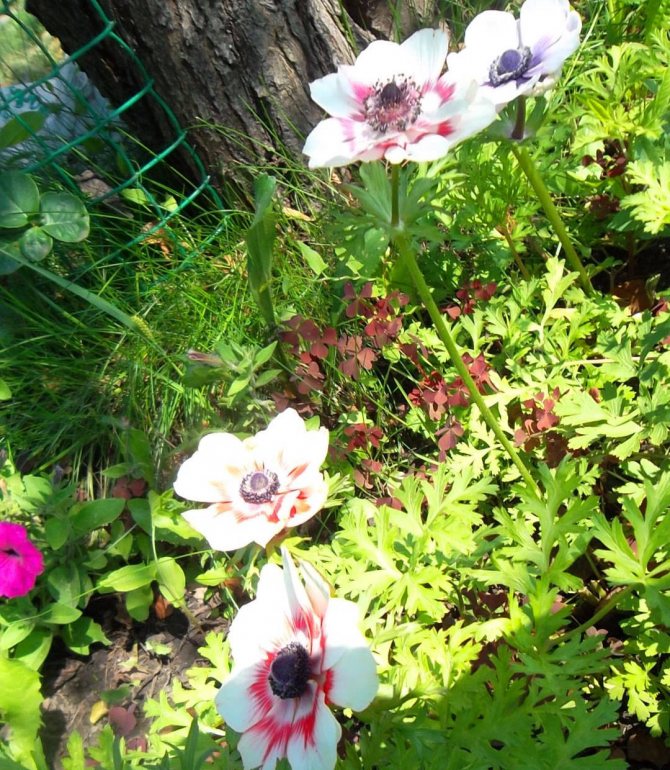

Most anemones do not tolerate open sunny space and prefer to grow in partial shade, with the exception of light-loving Mediterranean species - crown anemones, Apennine, Caucasian, tender.
Ephemeroids, in which the growing season begins before the appearance of greenery on the trees, is quite content with their neighborhood.
Anemonic bushes should not be planted in hollows, often flooded with melt and sedimentary water.
The rest of the plant is picky, not afraid of frosty winters.
Air humidity
The anemone does not make special demands on the humidity of the environment, however, in too hot weather, it favorably meets the spraying of foliage with the help of a fine nozzle of the irrigation hose.
High humidity often turns out to be detrimental to the anemone - the lower foliage begins to rot, spreading the affected areas to the entire plant.
How to water properly
With regard to the anemones, the statement will sound right: it is better to underfill than to pour.
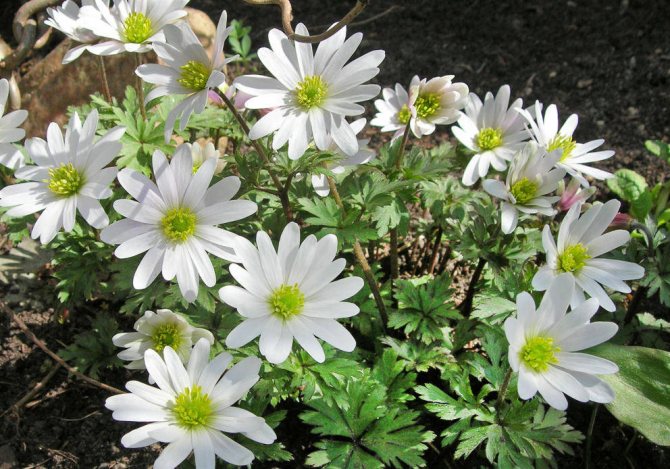

Only transplanted plants need regular watering - they are moistened as the soil dries out. Sedimentary moisture is sufficient for adult specimens.
To preserve it, they mulch the soil around the root collar with sawdust.
In hot weather, plants are watered at the root and sprayed, trying not to overdo it and prevent moisture stagnation.
Top dressing and fertilizers
During the flowering period, anemones are fed with complex mineral fertilizers, observing the doses indicated by the manufacturer on the package.
Organic matter is introduced before the growing season. If in the fall on the eve of wintering the anemone is mulched with peat or fallen leaves, early spring feeding is unnecessary.
Pruning
Anemones do not need special shaping of the crown.Bushes grow compact and do not require pruning.
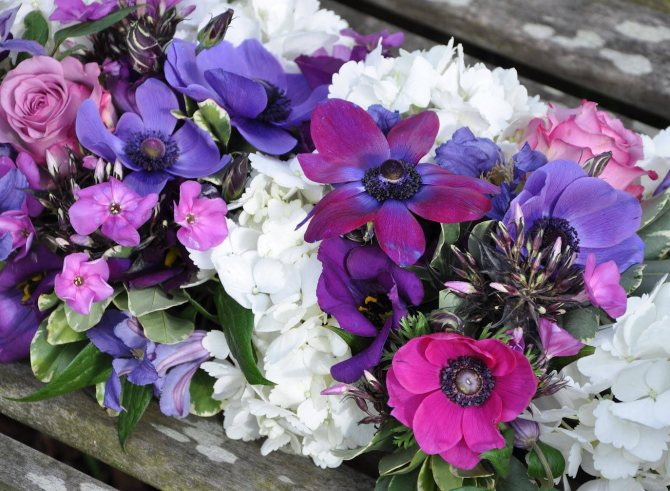

In ephemeroids, after the end of the growing season, the foliage dries and turns into low-decorative dry brooms, so it is cut off and removed from the flower bed.
The species growing all summer and autumn decorate the garden with filigree leaves, which acquire a faint purple hue closer to the onset of cold weather.
For the winter, the stems are cut, leaving only the root rosette, which, in some species, turns green even under the snow.
Preparation of planting material
Seed preparation
When preparing, you need to remember that seeds have a very low germination rate - part. Planting material must be freshly harvested. To increase the percentage of germination, the seeds are stratified, placed in a cold place for 3-8 weeks. To do this, they are combined with peat or sand in a ratio of 1: 3, the resulting mixture is well moistened.
The seeds need to be kept moist, so sprinkle them with water daily.
After swelling, the seeds are mixed with a small amount of the substrate and sprayed with water. Then they are removed to a room with good ventilation, where the temperature does not exceed 5 °. Then the boxes are buried in the ground. In winter, seeds undergo natural stratification, and in spring they should be planted in the ground.
Tuber preparation
The tubers should be immersed in warm water to awaken from sleep. Then they are planted in pots with moist soil in a well-ventilated place. Tubers can be wrapped with a damp cloth moistened with epin. Then place in a plastic bag for 5-6 hours. After that, you can plant the anemone in the ground.


Bloom
The flowering time of spring anemones is late May or early June.
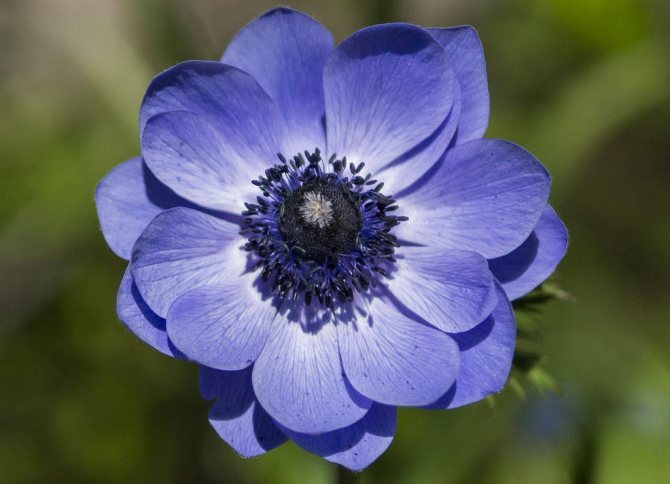

Summer ones bloom from mid-July, autumn ones delight with a variegated color of petals from late August until the first frost.
Even small clumps of planted anemones attract attention.
Graceful long stalks rise above the bushes, forming a light snow-white or variegated cloud of airy flowers of pink, lilac, crimson, blue, violet.
Caring for an anemone after flowering
Flowering lasts about two to three weeks, then the tops of the flower-bearing stems are crowned with the formed green boxes with seeds.


Florists try to cut them before ripening, because self-seeding of anemone is extremely aggressive towards other inhabitants of the flower bed and the entire garden.
The plant quickly conquers space for itself, if it is not limited in distribution.
When it becomes necessary to collect seed, they try not to miss the moment of opening the bolls.
Fluffy lumps that envelop the seeds are instantly picked up by the wind and carried over considerable distances.
Diseases and pests
Anemones are less susceptible to diseases and pests than other garden flowers. In conditions of excessive moisture, the root system suffers, especially in corms.
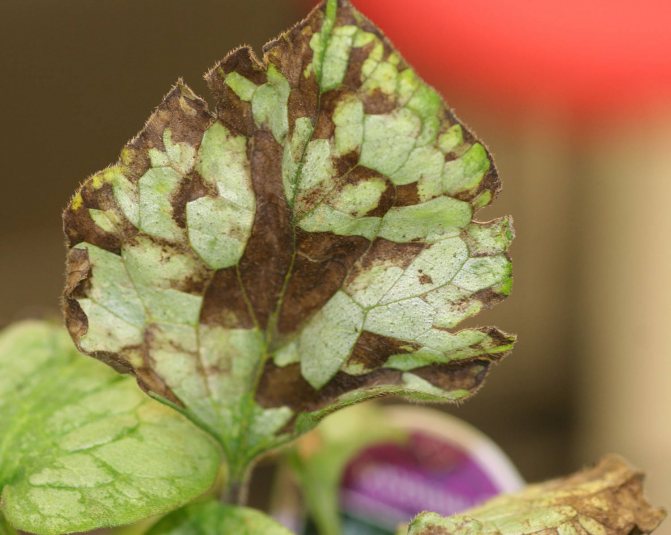

Leaf nematodes, which are not such frequent guests, are dangerous for anemones, but it is difficult to fight them because of their microscopic size, which does not allow the pest to be detected in a timely manner.
Unfortunately, when it becomes clear that a nematode is parasitizing on the anemone bushes, it is too late to save them.
Most of the leaf plates are covered with yellow-brown spots and are doomed to death.
The only thing that remains to be done is to cut off the affected tops and destroy them.
It is advisable to dig up the plants and treat with a systemic insecticide, for example, carbofuran or fenamiphos, dry and plant in another place.
Experienced growers say that nematodes do not appear where marigolds or calendula grow, as well as on plants planted next to garlic beds.
They annoy anemones in the garden and slugs with snails. These pests are collected by hand, and the plants are treated with a solution of metaldehyde.
Spring types of anemone
1 of 4
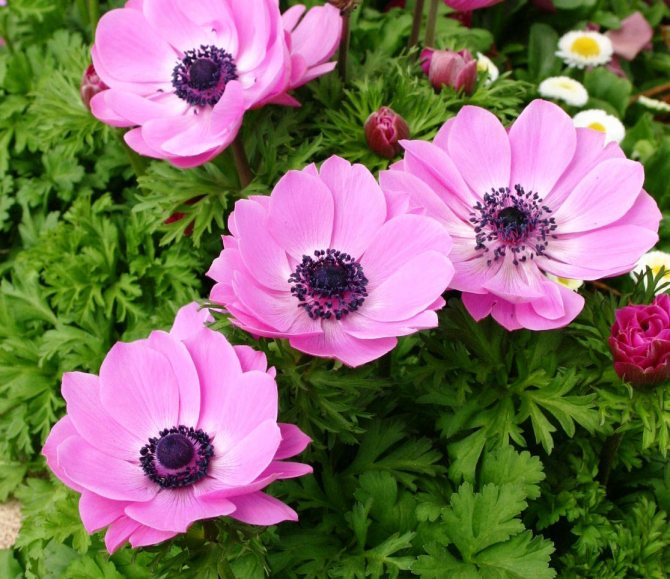

Anemone multi-dissected - perennial 15-50 cm tall with expressive pinnately dissected emerald-colored leaves and small flowers up to 4 cm in diameter, which bloom from early spring to mid-summer. The variety Pink silk with delicate petals is especially attractive, although other forms with lilac, yellow, white flowers are also decorative.
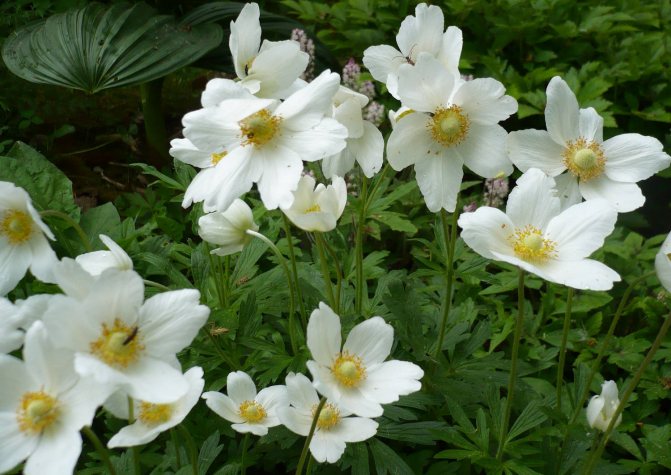

Forest anemone is a herbaceous plant with straight pubescent stems about 50 cm tall with whorls of two-, three-part leaves covered with fluffy hairs and white or cream flowers with a circle of 5-7 cm. Beautiful forms of open ground with large and double corollas have been bred.


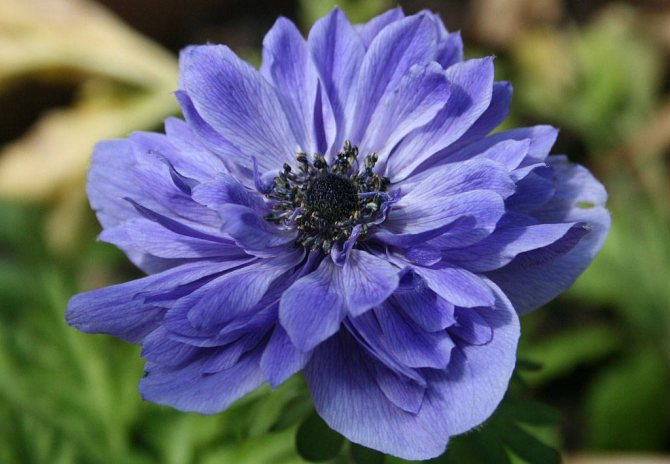

Terry blue anemone is a popular variety in garden floriculture with bright dark blue flowers.
3. Varieties of anemone:
3.1. Anemone Dubravnaya - Anemone nemorosa
Very attractive small flower with erect vertical stems burgundy or bright brown. Each stem bears a single white, pink or purple flower at the top with 6 rounded petals and numerous, long, yellow stamens. The leaves are green, complex, intricately carved. There are terry varieties.
↑ Up,


3.2 Anemone coronaria
Perennial, very brightly colored, bulbous plants. Leaves are green, compound, pinnately - separate, arranged alternately. The flowers are large, single, showy - white, red, blue or pink.
↑ Up,
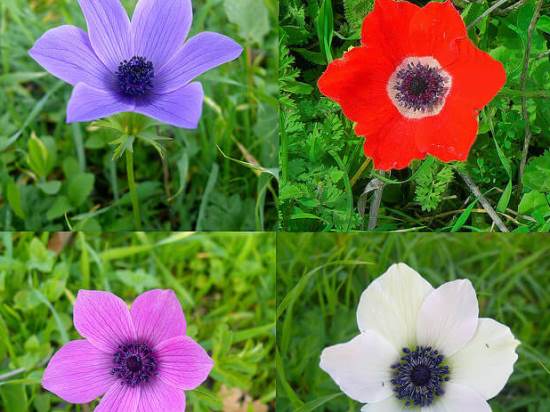

The petals of each flower can be colored in several tones. The flowering period is long - up to 4 weeks. One of the varieties of the crown anemone is anemone bridget - the owner of very large, bright, double flowers.
↑ Up,


Summer and autumn views
1 of 6


Anemone canadensis is a fast growing herb that does not tolerate droughts, with beautiful white flowers and carved foliage. It develops well both in the shade and in the sun.
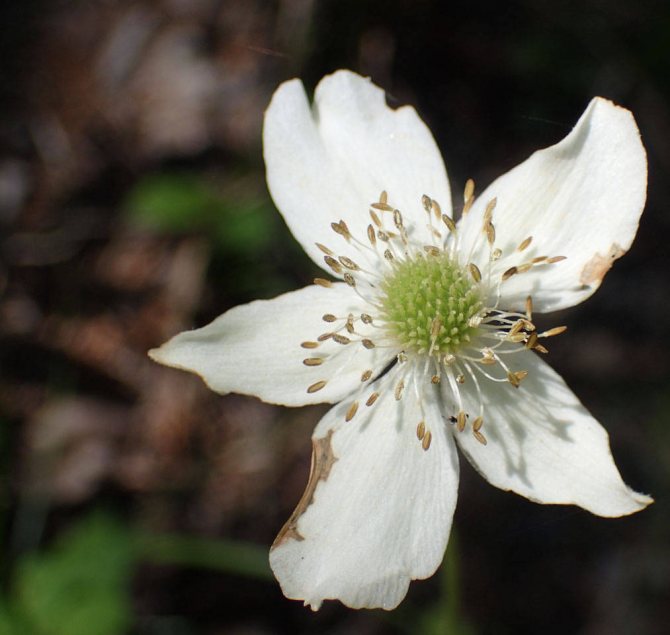

Virginia anemone is the only type of anemone that survives in flood conditions, therefore it is often used to decorate garden ponds. A tall, powerful perennial, growing up to 70 cm, with spectacular finger-dissected leaves and paniculate inflorescences of snow-white flowers with a bunch of expressive yellow stamens.
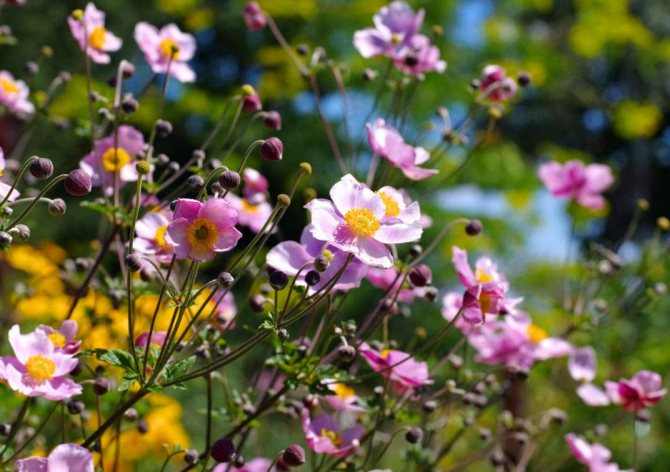

Japanese anemone is a tall herbaceous perennial with stems about 90 cm. The flowers are large, snow-white or pink, up to 8 cm in circumference, grouped in inflorescences of 10-15 pieces, bloom from August to frost. Breeders have bred many flowering varieties, for example, pamina with semi-double deep pink flowers and others.
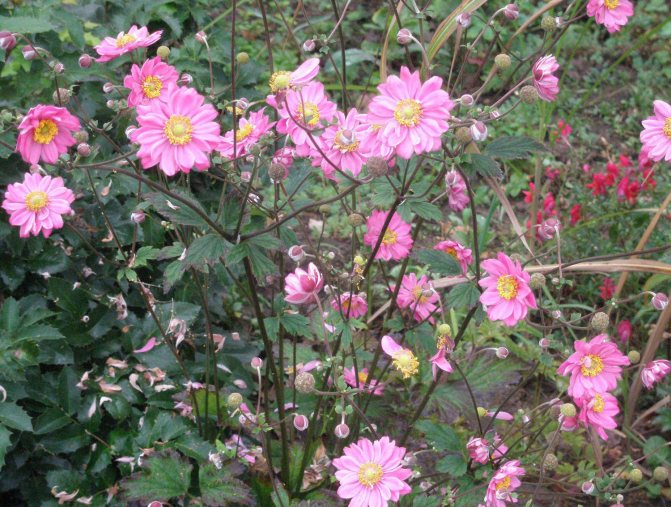

Anemone hybrid - large perennials more than a meter in height, with large corollas of various colors over 8 cm in diameter. They are characterized by weak frost resistance, they need a reliable shelter for the winter. Of the many varieties, Lorelai is popular - a spectacular plant with pale pink flowers collected in small umbrella inflorescences.
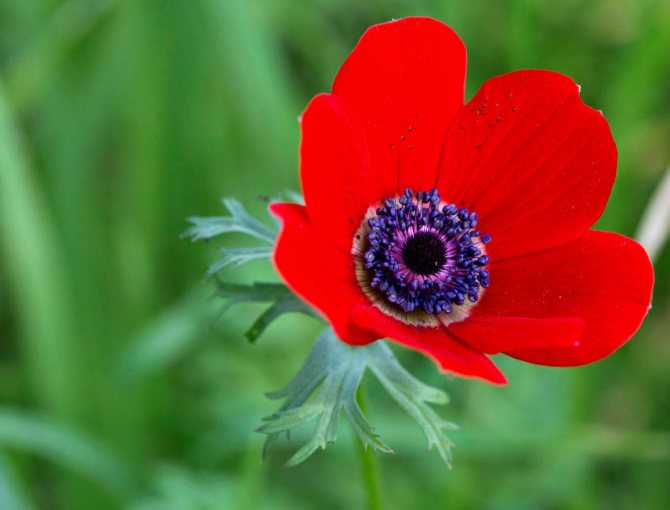

The crown anemone is a typical species of the genus with bright scarlet, pink, blue or white corollas. It is considered an autumn-flowering plant, but if you leave the tubers in the ground for the winter, reliably protecting from the cold, then the crown anemone blooms twice a season - in spring and autumn. Planting and caring for perennials is minimally laborious.


Gardeners love summer miniature types of anemone no more than 10-15 cm high - multi-headed with unusual dark stamens against the background of the blue corolla palette, yellow Richardson anemone and others.
Choosing a landing site
Whatever species the anemone belongs to, the best place for planting will be a transparent partial shade, where the petals will be protected from the sun, and there will be enough warmth and light. In the sun, the plants bloom well, but the inflorescences quickly lose color and fall off.
All varieties of perennial anemones love moderate moisture, but are sensitive to stagnant water. Therefore, you need to plant them in loose, slightly acidic or neutral soil.If the soil is dense and caked, it is better to add sand to it. Elevated terrain will reduce the risk of rot.
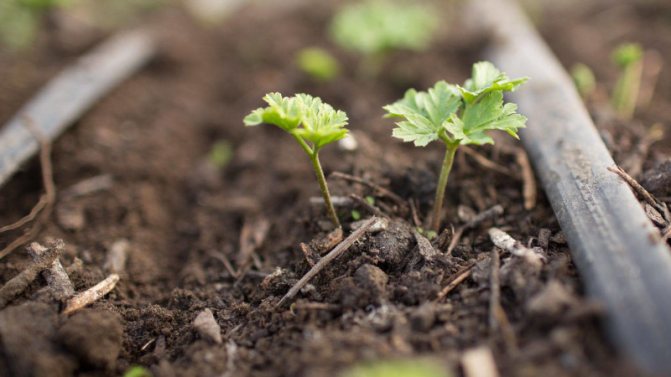

What care for an anemone in winter?
Rhizome species tolerate winter staunchly, especially adult plants.
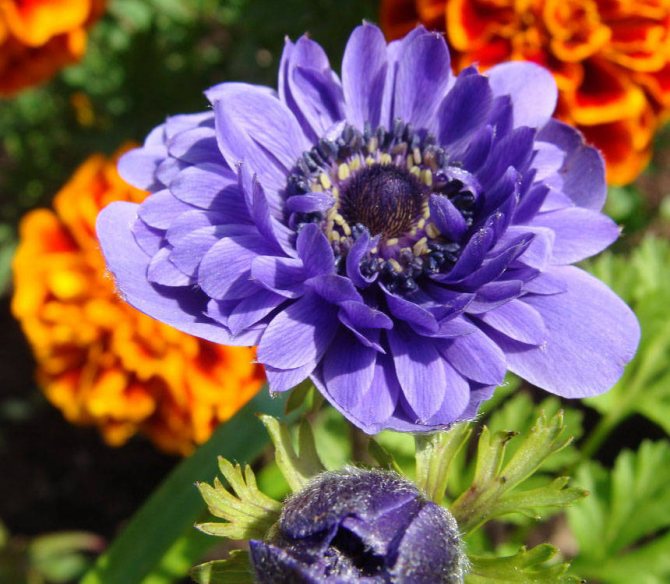

Young, recently transplanted anemones are advised to cover them with spruce branches or fallen leaves for the winter, otherwise they freeze out.
Tubers, as a rule, are dug up in the fall, washed in a solution of potassium permanganate, dried thoroughly and stored in the cellar until spring in containers with sand or sawdust.
Anemones are a wonderful decoration of the garden, and their diversity allows you to pick up plants with different flowering times and enjoy the gentle tremor of the petals all summer long.
CherryLink plugin not found
Transplanting anemones in autumn
The autumn transplant of winter-hardy anemones is carried out in September. This event does not always end successfully and spring is considered the preferred time for planting. Rhizome species of anemone do not tolerate transplanting well, many plants die after it.
Important! Ephemeroid anemones, which end flowering in May, are transplanted only in summer. When the aerial leaf mass dies off, a bud of new growth is formed at the rhizome for the next year.
When transplanting, the root of the flower is divided into several parts so that a renewal bud remains on each. In a new place, the divisions are planted to a depth of 5 cm. Such a depth will preserve the roots in winter with additional warming with mulch.
When choosing a planting site for anemone in a flower bed, take into account the growing season and care requirements. Rhizome forest anemones with spring-flowering bulbs, for example, daffodils, look good. Growing up in summer, foliage covers withered stems of ephemeroids, refreshing the flower bed.
Forest anemone also belongs to the spring-flowering group, but one of the few, it does not go to rest in summer - its beautiful, decorative leaves adorn the flower garden all summer. When planted in a damp semi-shady flower bed, it grows rapidly. Prefers fertile, loose soil. In early autumn, a heavily overgrown bush can be planted in different flower beds.



